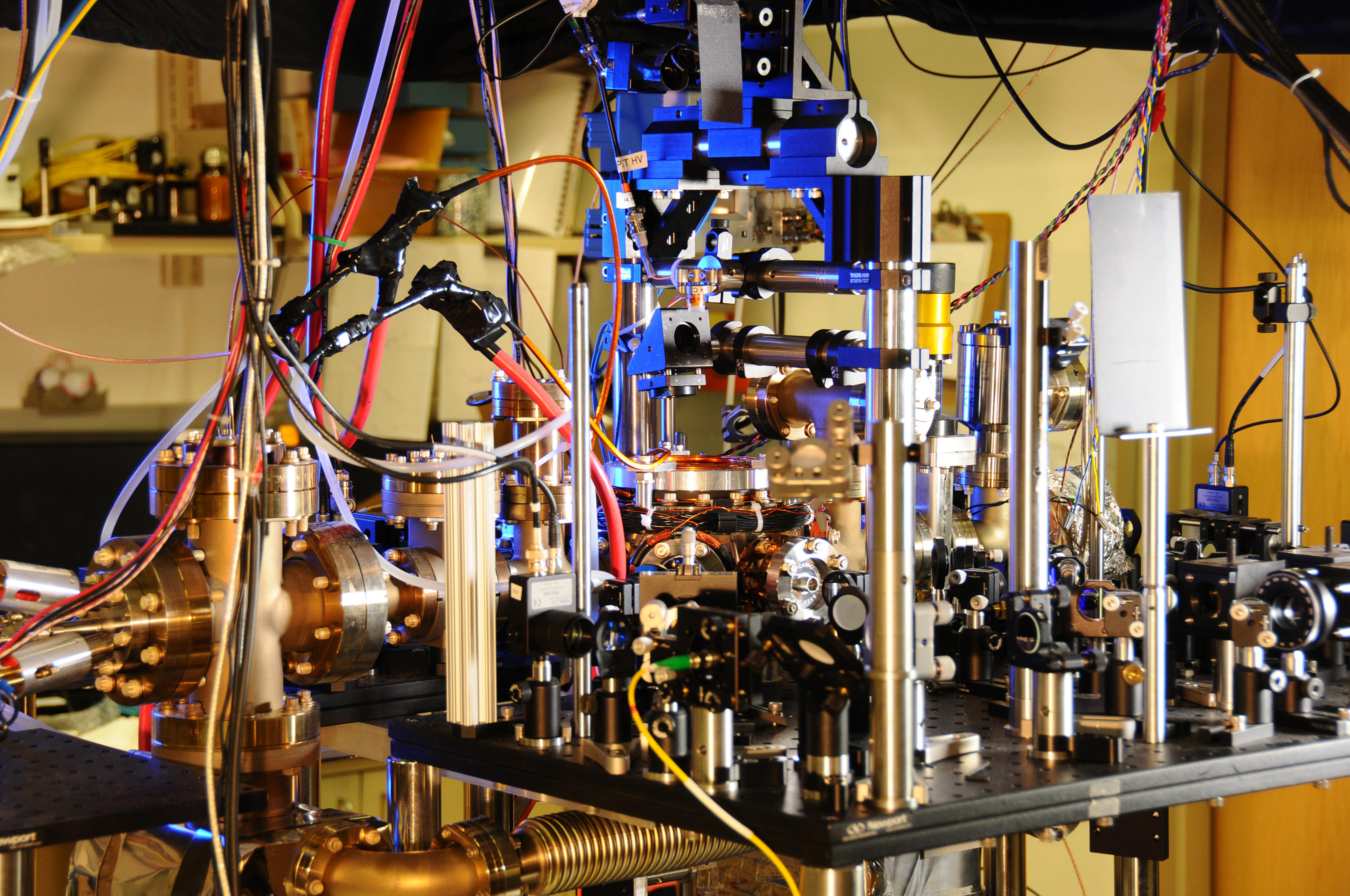
New paper by NCBJ scientists may pave the way for new atomic clocks
09-06-2025
Atomic clocks, which rely on measuring the resonant frequency of atoms, can measure time with remarkable accuracy. In the scientific community, a strong candidate for a new atomic clock standard is the thorium-229 isotope. In a new paper just published in the journal Physical Review C, researchers from the NCBJ's Department of Nuclear Techniques and Equipment have described the isomeric excitation process and the potential for producing this isotope.
An atomic clock is a device for measuring time, the principle of which is based on the properties of atoms, specifically their energy states. By absorbing or emitting electromagnetic radiation, atoms can change their energy states. By applying electromagnetic radiation to the atoms of a given element that are in the ground state, some of them can change their energy state. By tuning the frequency of radiation, it is possible to achieve the specific oscillation frequency of an element, i.e. a situation in which the maximum number of atoms change their state. The frequency of such transitions is very stable, so it can be the basis for accurate time measurements.
Current atomic clocks are based on isotopes of cesium-133, rubidium-87, or hydrogen-1 (so-called hydrogen masers) and can achieve accuracy as high as 1016, which corresponds to the clock being delayed by a second every 300 million years. This is sufficient accuracy to base, among other things, the SI definition of a second, which is described as: “the fixed numerical value of the caesium frequency, , the unperturbed ground-state hyperfine transition frequency of the caesium-133 atom, to be 9192631770 when expressed in the unit Hz, which is equal to s−1”. The researchers' goal is to create a clock with an even higher accuracy, on the order of 1018-1019, corresponding to a delay of one second every age of the Universe. In recent years, thorium-229 has become a new candidate isotope for use in atomic clocks.
This isotope has attracted the curiosity of scientists not only because of its potential applications. Of particular interest is its first metastable excited state, 229mTh, with an energy, about 8 eV above the ground state, which is several orders of magnitude lower than typical excited states of other elements. Recent years have brought a number of experiments dealing with this subject, resulting, among other things, in the accurate determination of the excitation frequency (2,020,407,384,335 (2) kHz, corresponding to an energy of 8,355,733,552 eV) between the ground state of Th-229 and its first excited state. Such accuracy of the experiment provides a unique opportunity to study the interactions of the atomic nucleus with electrons. This has been used by scientists at the NCBJ's Department of Nuclear Techniques and Equipment, who have described the process of excitation of the thorium-229m isomer from the ground state through near-resonant electron transitions.
Advances in experimental techniques, especially techniques for manipulating highly-charged ions (HCIs), have provided researchers with new methods to induce elements from the ground state to isomeric excited states. In the case of thorium-229 studied here, theorists propose using such methods as nuclear excitation by electron capture (NEEC), nuclear excitation by inelastic electron scattering (NEIES), electronic resonance, or defects in doped crystals. Another of the proposed mechanisms, on which the authors of the paper published in Physical Review C focused their attention, is NEET, or nuclear excitation by electron transfer. Experimental data on this method are quite abundant but inconsistent, making it impossible to verify the theory describing the process. However, it is thanks to the extremely accurate experimental data of the excitation energy of the 229mTh isomer that the scientists were given the opportunity to study the NEET process under well-defined conditions.
“In the NEET process, the transition energy of the electron is transferred to the excitation of the nucleus, which is particularly effective if the energies are close to each other,” explains Karol Kozioł, PhD., author of the paper. “The isomer we studied fulfills these conditions, so we were able to precisely determine the transition energy and intensity of this process.” The research was based on the multiconfiguration Dirac-Hartree-Fock method with so-called configuration interaction (MCDHF-CI). To find a transition that could be used to study the NEET process, NCBJ researchers conducted a series of calculations for thorium ions with charges ranging from 31+ to 53+ and studied more than 1,800 energy states and nearly 62,000 electron transitions. Based on these, the ion 229mTh39+ was selected, for which the determined excited state energy was 8.308±0.069 eV. “The analysis of the NEET process for the selected ion showed an extremely high excitation efficiency of 2.5*1016 s-1 under resonance conditions, although outside these conditions this value drops by many orders of magnitude,” describes Karol Kozioł.
Based on the results, NCBJ specialists have proposed an experiment that can be carried out using an EBIT (Electron Beam Ion Trap) device. The prediction of the experiment indicates that at the moment of resonance it will be possible to achieve excitation efficiency as high as 5*1020 per second. Taking into account the uncertainty of the excitation energy, this value could fall as low as 4.4 per second. Such a huge range of values will allow precise verification of the theory describing the NEET process. “By researching the 229mTh isomer, we were able to accurately study the process of excitation of nuclei by electron transitions under well-defined conditions, especially extremely low excitation energies,” concludes Jacek Rzadkiewicz, Ph.D., NCBJ professor and co-author of the paper. “Moreover, the predictions we obtained for the experiments may open the way for its efficient production for real applications, such as the new standard for atomic clocks. ”
Original paper: K. Kozioł, J. Rzadkiewicz, "Nuclear excitation by near-resonant electron transitions in 229Th39+




